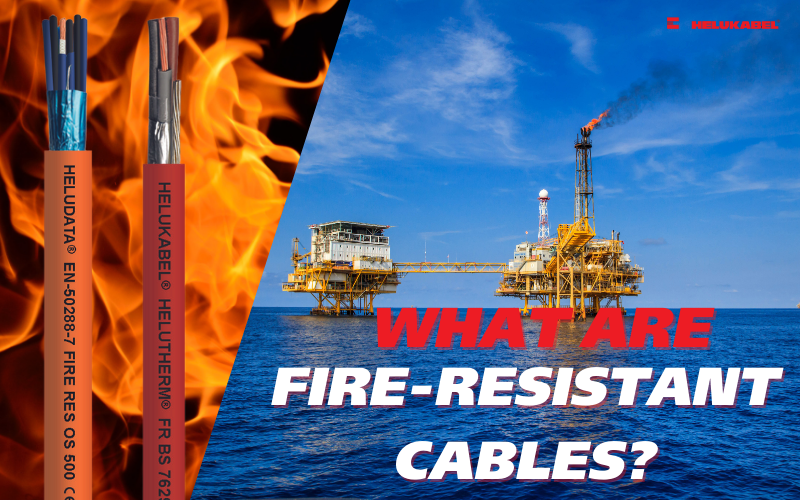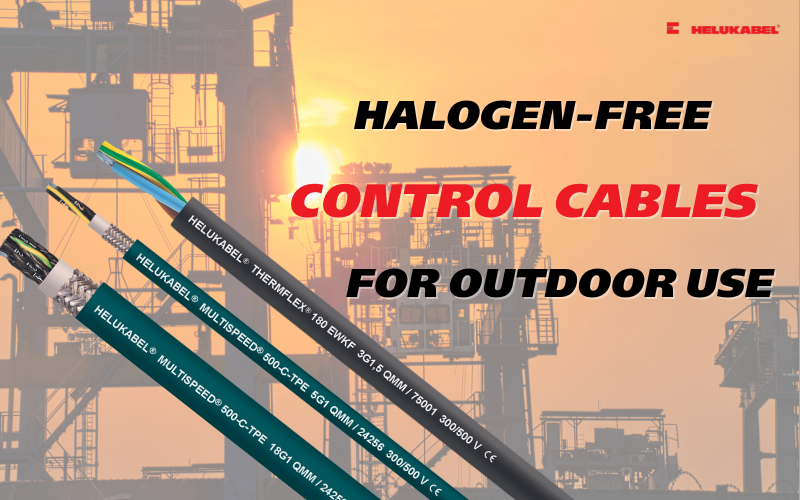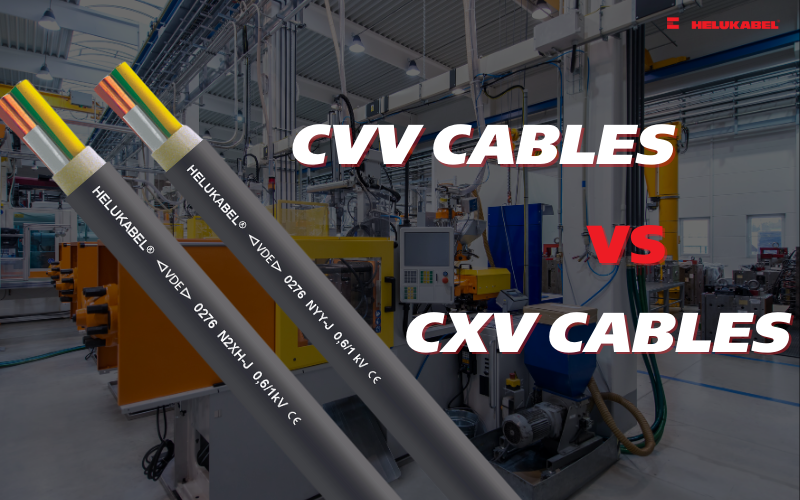Top 3 influential factors when choosing fire-resistant cables
There are many types of fire-resistant cables with varying characteristics, each suitable for specific applications and operating environments. Let's explore the key considerations for selecting fire-resistant cables in the following article!
Electric cables are made from various materials, some of which are highly flammable in the event of a fire. Dense and toxic smoke can obstruct visibility and impair communications within the affected area, hindering evacuation efforts and the protection of human life and property. Particularly in industries with significant fire and explosion risks, specialized fire-resistant cables are increasingly being used.
>>See more: What are fire-resistant cables and their range of applications?
1. What factors should be kept in mind when choosing fire-resistant cables?
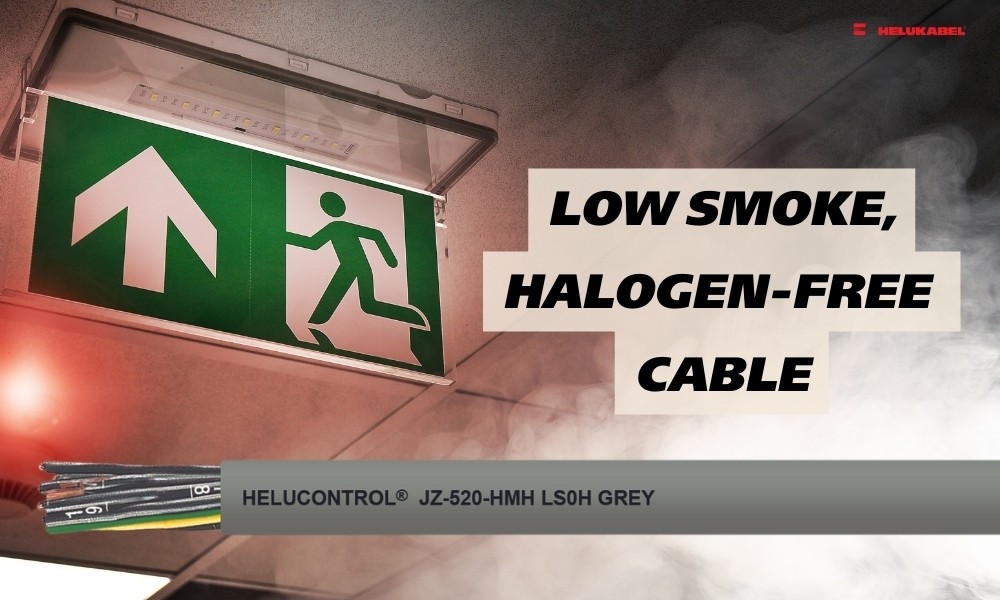
When choosing fire-resistant cables, it is crucial to consider several factors that can influence the severity of a fire or explosion incident, such as toxic smoke, smoke density, and the speed of fire spread. Ensuring that fire-resistant cables meet the requirements of each specific application, installation method, and comply with standards and regulations is essential.
1.1 Fire spread speed
Fire typically starts at a single point. The characteristics of the cables and the operating environmental conditions directly affect the speed at which the fire spreads to other areas, potentially increasing the severity of the fire.
1.2 Amount of smoke produced
The density of smoke produced depends on the chemical composition of the cable material when burned. Such smoke can be hazardous to health when inhaled, impairing visibility and hindering first aid efforts. Therefore, fire-resistant cables are often made of halogen-free materials, which do not produce toxic fumes when burned.
>>See more: Why should halogen-free cables be used?
1.3 Circuit integrity
Circuit integrity refers to the ability of an electrical cable to continue to operate normally when subjected to a specified source of fire for a specified time and under specified conditions.
| Normal operating duration of fire-resistant cables | |
| FE30 | Fire rated 30 minutes (0.5 hours) |
| FE60 | Fire rated 60 minutes (1 hour) |
| FE120 | Fire rated 120 minutes (2 hours) |
| FE180 | Fire rated 180 minutes (3 hours) |
2. A few notes to select fire-resistant cables’ material
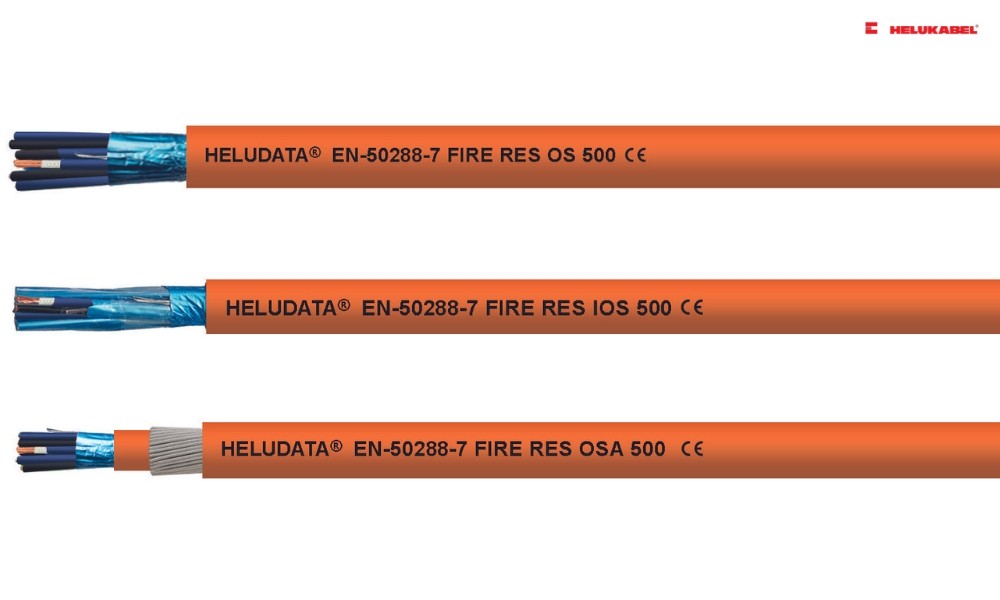
2.1 Conductor material and core structure of fire-resistant cables
Aluminum has a melting point of 685℃, while fire-resistant cables must withstand temperatures up to 750℃. Thus, aluminum conductors are unsuitable for fire-resistant cables. Copper, with a melting point above 1000℃, is suitable for fireproof cables.
Copper wires with a cross-section of 1.0mm² or less do not melt at high temperatures but are prone to breakage due to local overheating and slight external influences. Therefore, they are unsuitable for fireproof cables.
An uneven conductor surface can damage the mica tape and compromise the cable's performance. Cables with a large cross-section are difficult to make fire-resistant. Round core conductors are preferred for fire-resistant cables because their smoother surface exerts a more uniform force on the mica tape, reducing damage and cost compared to fan-shaped structures.
>>See more: A glance at conductors' cross-section and their applications
2.2 Mica tape selection
Mica is the material mainly used for fire-resistant cables. Compared to standard cables, mica is able to withstand higher temperatures, has high stability, ensuring the safety of the electrical system.
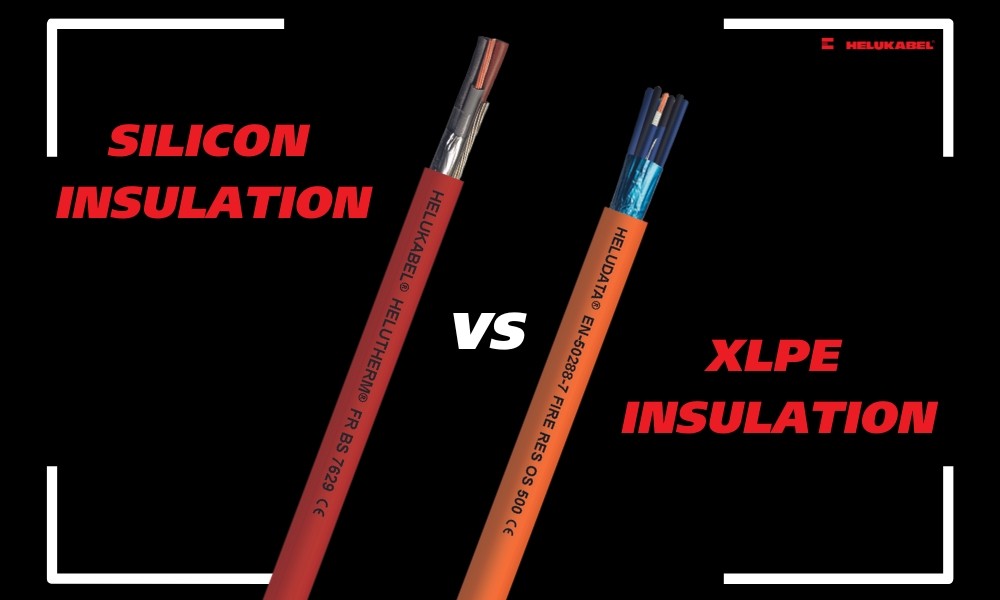
2.3 Insulation material of fire-resistant cables
Commonly used materials include PVC, PE, and XLPE. PE and XLPE are more effective than PVC at high temperatures. When burned, they produce fewer solid residues, which minimizes damage to the mica tape.
The main components of PVC are PVC resin and CaCO3 that adhere to the outside of the mica tape according to its combustion mechanism. Its residual combustion solid mixture Cao-CaCl2 is in a relatively stable state and adheres to the outside of the mica tape during combustion. It will create internal stress, compress the mica tape, damage the mica tape and affect its fire resistance.
PE and XLPE, being pure hydrocarbons, primarily produce CO2 and water vapor upon combustion, with minimal solid residues that do not damage the mica tape. Therefore, while PVC, PE, and XLPE can all be used as insulation materials, PE and XLPE are preferable for fire-resistant cables.
3. A glance at standards and certifications for fire-resistant cables
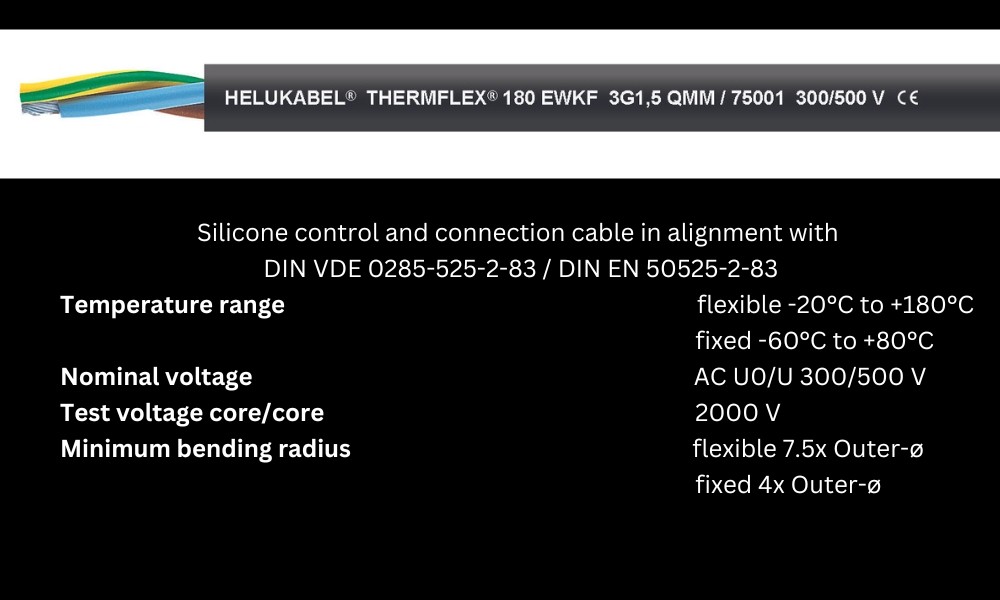
Fire-resistant cables need to strictly comply with national, regional, and international standards and regulations to ensure the safety of property and human lives. There are many different standards, depending on the specific country and region:
3.1 IEC standards
IEC (International Electrotechnical Commission) classifies the fire performance of electric cables into many different classes. The IEC Standard for Flame Retardancy evaluates the flame propagation of single wires (IEC 60332-1, IEC 60332-2, IEC 60332-3) and bundled cables (IEC 60332-3).
The IEC 60332-1-2 flammability test requires the fire-resistant cables to be fixed vertically and exposed to a Bunsen burner at a 45° angle from 60 minutes (≤25 mm) to 120 minutes (25<D≤50mm). Damage to fire-resistant cables must stop at least 50mm below the fixing clamp and the fire-resistant cables must be self-extinguishing.
The IEC 60332-3 flammability test requires the cables to be placed permanently on a ladder, either close or far depending on the type of fire. The temperature is determined by the specific volumes of propane and air. The duration can range up to 20 minutes, depending on the cable type. Fire damage is visible up to 2.5m from the bottom of the burner to the top.
3.2 CPR standards for fire-resistant cables
The EU’s CPR standard classifies cables into 7 levels, based on the flame spread and heat release:
| Fca | Flammable | |
| Eca | Basic performance | Products where a small flame attack does not cause large flame to spread |
| Dca | Products that show a fire performance approximately like wood. Products show a continuous flame spread, a moderate fire growth rate, and a moderate heat release rate | |
| Cca | Products that do not give a continuous flame spread, show a limited fire growth rate, and show a limited heat release rate | |
| B2ca | Higher performance | Products that are combustible but show very little burning |
| B1ca | Products that are combustible but show very little burning | |
| Aca | Level of highest performance corresponding to products that practically cannot burn |
HELUKABEL’s fire-resistant cables adhere to CPR standards with various levels to suit varying needs:
Eca level: JZ-500, F-CY-JZ, TOPFLEX 600-C-PVC, H05V-K
Cca level: JZ-520 HMH LS0H GREY, HELUPOWER 1100 RZ1-K, JZ-510 MB
B2ca level: NHXMH, N2XH, N2XCH, HELUCONTROL® JZ-520-HMH-C LS0H GREY
>>See more: Comparing fire-resistant cables and flame-retardant cables
3.3 Other standards for fire-resistant cables
The US National Electrical Code (NEC) establishes guidelines for evaluating fire-resistant cables, including types such as CMP (Plenum cables), CMR (Riser cables), CM, CMX, and LSZH cables.
Additionally, there are UL standards for fire-resistant cables. Cables conforming to UL standards must comply with the following five test standards: CMP (Plenum fire test), CMR (Riser fire test), CM (Vertical tray fire test), CMG (Vertical tray fire test), and CMX (Vertical wire fire test).
If you still have any concerns or questions, don't hesitate to reach out to HELUKABEL Vietnam's engineering team promptly for detailed assistance.
HELUKABEL® Vietnam
905, Nguyen Kiem Street, Ward 3, Go Vap District, Ho Chi Minh City 700000, Vietnam
Tel. +84 28 77755578 | info@helukabel.com.vn | www.helukabel.com.vn

